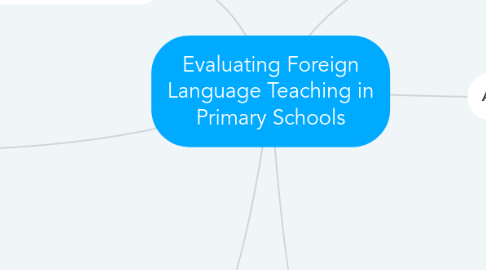Evaluating Foreign Language Teaching in Primary Schools
by Monica Chicaiza

1. Contex
1.1. It is a sociolinguistic context and the evaluation takes place in an Irish school.
2. Aims of the program
2.1. (i) To foster positive attitudes to language learning. (ii) To establish co-ordination between language teaching at the first and second levels. (iii) To encourage diversification in the range of languages taught. (iv) To enable a greater number of child
3. Implications for evaluation
3.1. Pilot project evaluation and use for policy development: The timing problem inherent in the use of pilot program evaluations for policy decision. Implementing the Stake perspective: The aspiration, the implementation level, addressing the VFM (value for money) question and resources for educational provision. Dynamic account of the baseline: The PMLP (Primary Modern Language Project) evaluation Focus on views and achievements rather than lesson processes: As the evaluation did not have a classroom observation component, it was not possible to consider what actually happened in the program. The bilingual hinterland of these classroom: First, the teacher dissatisfaction with managing the classroom in the target language may be influenced by the high and effective levels of bilingualism. Second, the pupils’ experience of difficulty in comprehension and following the lesson.
4. Design of the evaluation
4.1. The design of the evaluation is divided in two years with their own evaluation strategy: teachers’ survey and 22 classes study including Assessment of learning outcomes, pupil attitudes and teachers’ assessment of pupils’ competence. The evaluation design reflects transparent approaches to sampling, to achieving a balance between the big picture presented in the survey data, and the more detailed accounts presented by the case study element.
5. Data collection methods
5.1. Administration of the pupil questionnaire and Administration of the tests
6. Aims and scope of the evaluation
6.1. Reasons 1.To ensure that value for money was obtained. 2. To study the outcomes in terms of levels of proficiency attained and attitudes inculcated. 3.To derive maximum value from the experience so that overall policy on language teaching in Ireland can be informed by the outcomes. Aims of Evaluation Related with reason 2: 4. To study pupils’ achievement in the modern language. 5. To investigate pupils’ attitudes and motivation and other affective aspects of modern language learning such as lesson anxiety, self-concept as a language learner and perception.


